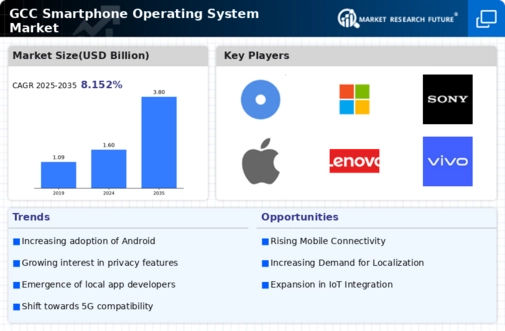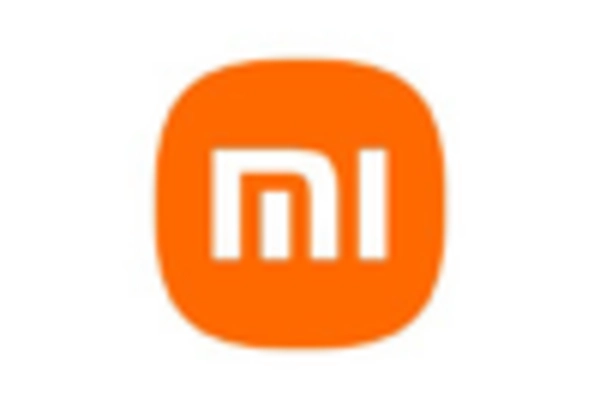Rising Adoption of Smart Devices
The proliferation of smart devices in the GCC region is a significant driver of the smartphone operating-system market. As households increasingly adopt smart home technologies, the demand for operating systems that can seamlessly integrate with these devices grows. By 2025, it is estimated that smart device penetration in the GCC will reach 60%, creating a need for operating systems that facilitate interoperability. This trend encourages operating system developers to create platforms that support a wide range of smart devices, enhancing user convenience and functionality. Consequently, the smartphone operating-system market must evolve to accommodate this growing ecosystem, ensuring compatibility and ease of use across various devices.
Increased Focus on User Experience
User experience has emerged as a critical driver in the smartphone operating-system market, particularly within the GCC. As competition intensifies, operating system developers are increasingly prioritizing intuitive interfaces and seamless navigation. In 2025, user experience is expected to influence over 70% of consumer purchasing decisions in the smartphone market. This trend compels developers to invest in research and development, focusing on enhancing usability and accessibility. Furthermore, the smartphone operating-system market must adapt to diverse user demographics, ensuring that features cater to various age groups and tech-savviness levels. This emphasis on user experience is likely to shape the future of operating systems, driving innovation and differentiation.
Advancements in Mobile Connectivity
The smartphone operating-system market is significantly influenced by advancements in mobile connectivity technologies, such as 5G. The GCC region is at the forefront of 5G deployment, with several countries already rolling out this technology. By 2025, it is anticipated that 5G subscriptions in the GCC will exceed 50 million, representing a substantial increase in mobile data consumption. This rapid evolution in connectivity necessitates that operating systems evolve to support enhanced data speeds and lower latency, thereby improving user experiences. As a result, smartphone operating-system market players must prioritize the integration of features that leverage 5G capabilities, ensuring that their platforms remain competitive and relevant in a fast-paced technological landscape.
Growing Demand for Mobile Applications
The smartphone operating-system market experiences a notable surge in demand for mobile applications, particularly in the GCC region. As consumers increasingly rely on smartphones for various tasks, the need for diverse and innovative applications becomes paramount. In 2025, the GCC mobile app market is projected to reach approximately $3 billion, reflecting a growth rate of around 20% annually. This trend compels operating system developers to enhance their platforms, ensuring compatibility and performance for a wide array of applications. Consequently, local needs..
Emergence of Localized Content and Services
The smartphone operating-system market is witnessing a shift towards localized content and services, particularly in the GCC. As consumers increasingly seek content that resonates with their cultural and linguistic preferences, operating system developers are compelled to adapt. In 2025, it is projected that localized applications will account for over 30% of the app market in the region. This trend highlights the importance of integrating local languages, cultural references, and region-specific services into operating systems. By prioritizing localization, developers can enhance user engagement and satisfaction, ultimately driving growth in the smartphone operating-system market. This focus on localized content is likely to become a defining characteristic of successful operating systems in the GCC.

















Leave a Comment